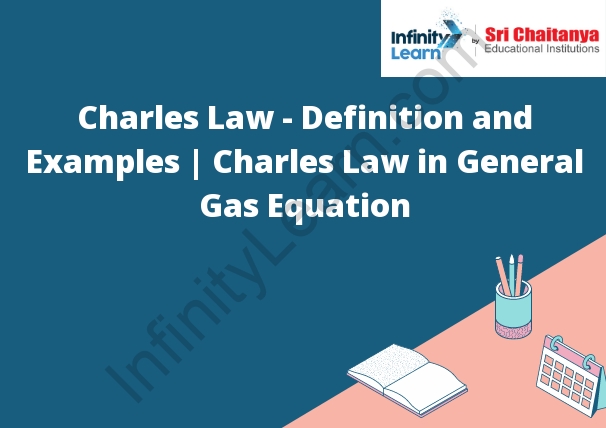Table of Contents
Charles Law in General Gas Equation
Charles Law – Definition: Charles’ Law states that the volume of a gas is directly proportional to the absolute temperature of the gas. In equation form, this is written as V ∝ T. The constant of proportionality depends on the type of gas.

What is Charles Law?
Charles Law states that the volume of a gas is inversely proportional to the pressure of the gas.
General Gas Equation – Charles Law
The Charles Law states that the volume of a gas is directly proportional to its temperature. This law is based on the kinetic theory of gases, which states that the molecules of a gas are in constant motion. When the temperature of a gas is increased, the molecules move faster and the volume of the gas increases.
General Gas Equation based on Charles Law
In the late 1700s, French scientist Jacques Charles studied the relationship between the volume of a gas and the temperature at which it was contained. He found that if the pressure on a gas is held constant, its volume will increase as the temperature increases. Conversely, if the temperature is held constant, the gas volume will decrease as the pressure increases. This relationship is now known as Charles’s law.
The general gas equation states that the volume of a gas is inversely proportional to the pressure it is subjected to. In mathematical terms, this relationship can be expressed as:
V ∝ 1/P
where V is the volume of the gas, and P is the pressure it is subjected to.
The General Gas Equation is a mathematical formula used to calculate the pressure, volume, and temperature of a gas. The equation is based on Charles Law, which states that the volume of a gas is directly proportional to the temperature of the gas.
The General Gas Equation is:
PV = nRT
Where:
- P is the pressure of the gas
- V is the volume of the gas
- n is the number of moles of the gas
- R is the ideal gas constant
- T is the temperature of the gas
Charles’s Law has the following problems
Charles’s Law states that the volume of a gas is inversely proportional to the pressure of the gas. This law is often used in gas law problems. There are a few problems with Charles’s Law.
- One problem with Charles’s Law is that it is not always true. The volume of a gas can be directly proportional to the pressure of the gas. This happens when the gas is in a container with a fixed volume.
- Another problem with Charles’s Law is that it does not take into account the temperature of the gas. The volume of a gas will change depending on the temperature of the gas.
- A final problem with Charles’s Law is that it does not take into account the type of gas. The volume of a gas will change depending on the type of gas.
Examples for Problems Requiring the Application of Charles’s Laws
1. A metal sphere is placed in a liquid. The sphere is at equilibrium and is not moving.
2. A metal sphere is placed in a liquid. The sphere is at equilibrium and is not moving. The temperature of the sphere is raised.
3. A metal sphere is placed in a liquid. The sphere is at equilibrium and is not moving. The temperature of the sphere is lowered.
4. A metal sphere is placed in a liquid. The sphere is at equilibrium and is not moving. The sphere is given a small but constant force in the direction of the liquid’s surface.
5. A metal sphere is placed in a liquid. The sphere is at equilibrium and is not moving. The sphere is given a small but constant force in the direction opposite of the liquid’s surface.





